Hike
Paparoa Track, South Island, New Zealand
New Zealand’s latest Great Walk (the 10th Great Walk, in fact) is a shared-use (hikers and MTB) extravaganza that takes ‘trampers’ (Kiwi-speak for bushwalkers) across the Paparoa Range and through the ruggedly spectacular landscape that is Paparoa National Park, on the wild west coast of New Zealand’s South Island. It can be walked all year round.
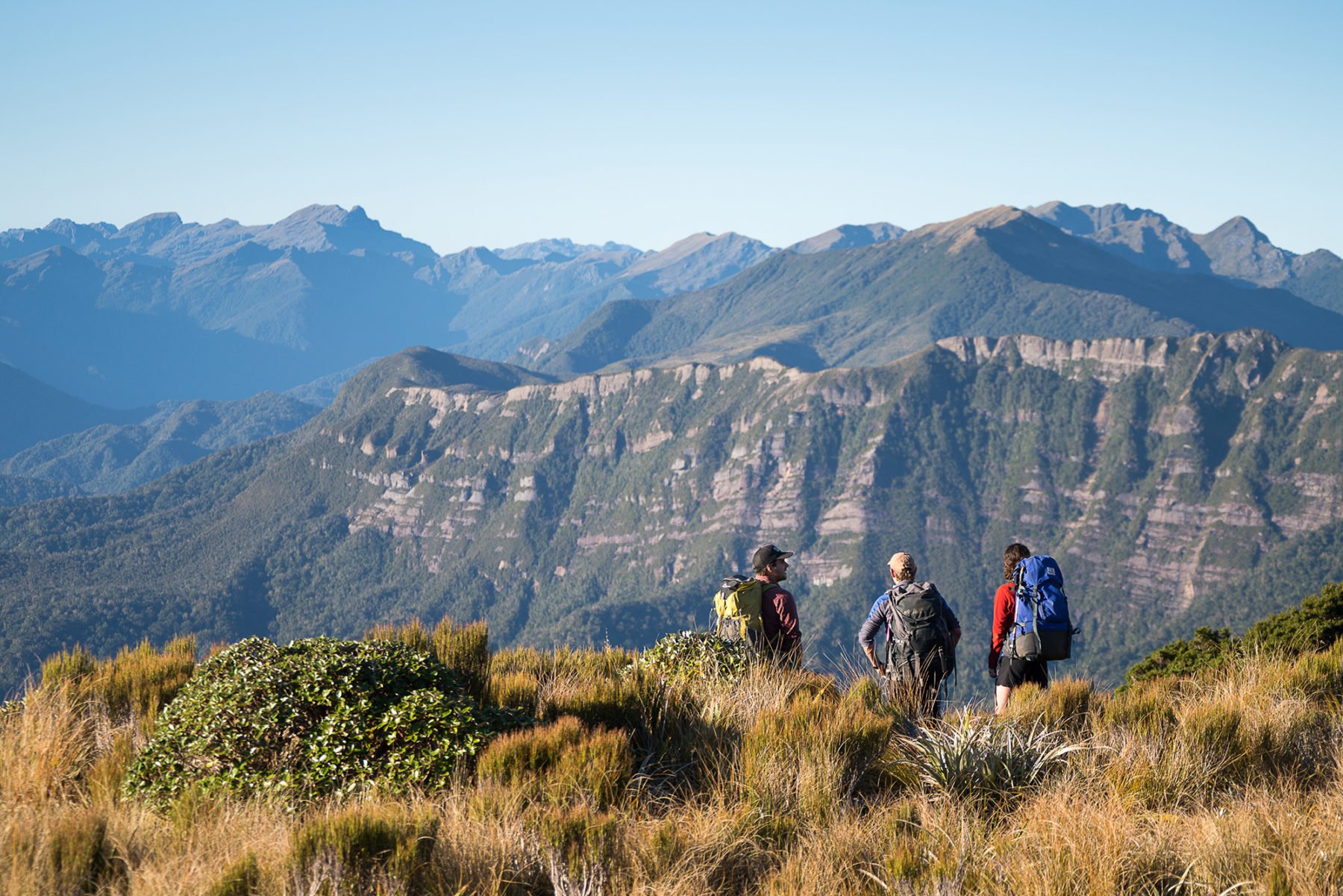
As a Department of Conservation (DOC) Great Walk, the 55.1km Paparoa Track is very well constructed and the three DOC Great Walk huts along the track are brilliant, featuring the usual bunk beds (with mattresses), gas cooking outlets, heating and (non-flush) toilets. There’s also water on tap (this is untreated so be sure to boil before use). As with all of NZ’s Great Walks, you need to book hut tickets before you go (online Great Walks bookings for 2022/23 open early May 2022) but once that’s sorted, you just have to focus on what is a brilliant three-day walking experience (there’s also a four-day guided version).
The Paparoa Track is best walked south-to-north, from Smoke-ho car park (near Blackball, 45 mins drive from Greymouth) and actually starts with walkers traversing the historic Croesus Track (a relic of the region’s goldrush days) and climbs to Ces Clark Hut before you traverse alpine terrain (scrub and tussock) while copping some cracking views to the Tasman Sea. Moonlight Hut is the first night’s accommodation before you tackle the escarpment and then descend through podocarp forest to Pororari Hut.
The final day means more descending through gorge country and beech forest before reaching the junction with the Inland Pack Track, and then dropping down to the beautiful Pororari River and on to the finish-point of Waikori Road car park. (Mountain bikers split off at the junction of the Inland Pack Track and ride through the Punakaiki River valley to reach the car park.)
The Paparoa Track is yet another example of how well NZ’s Department of Conservation has nailed the walking experience and, for those who have already ‘done the Great Walks’ this new one is a must to add to that list.
Kluane National Park, Yukon Territory, Canada
The tallest mountains in Canada are found in Kluane National Park and Reserve, in the Yukon Territory. The highest of them all (and the second highest in North America) is Mount Logan, at 5959 metres. In the summer, Kluane NP comes alive with sunshine, songbirds, and wildflowers, and becomes the ultimate backcountry hiking destination, offering an alpine and sub-alpine landscape for hikers of all levels, from day hikes to multi-day treks.
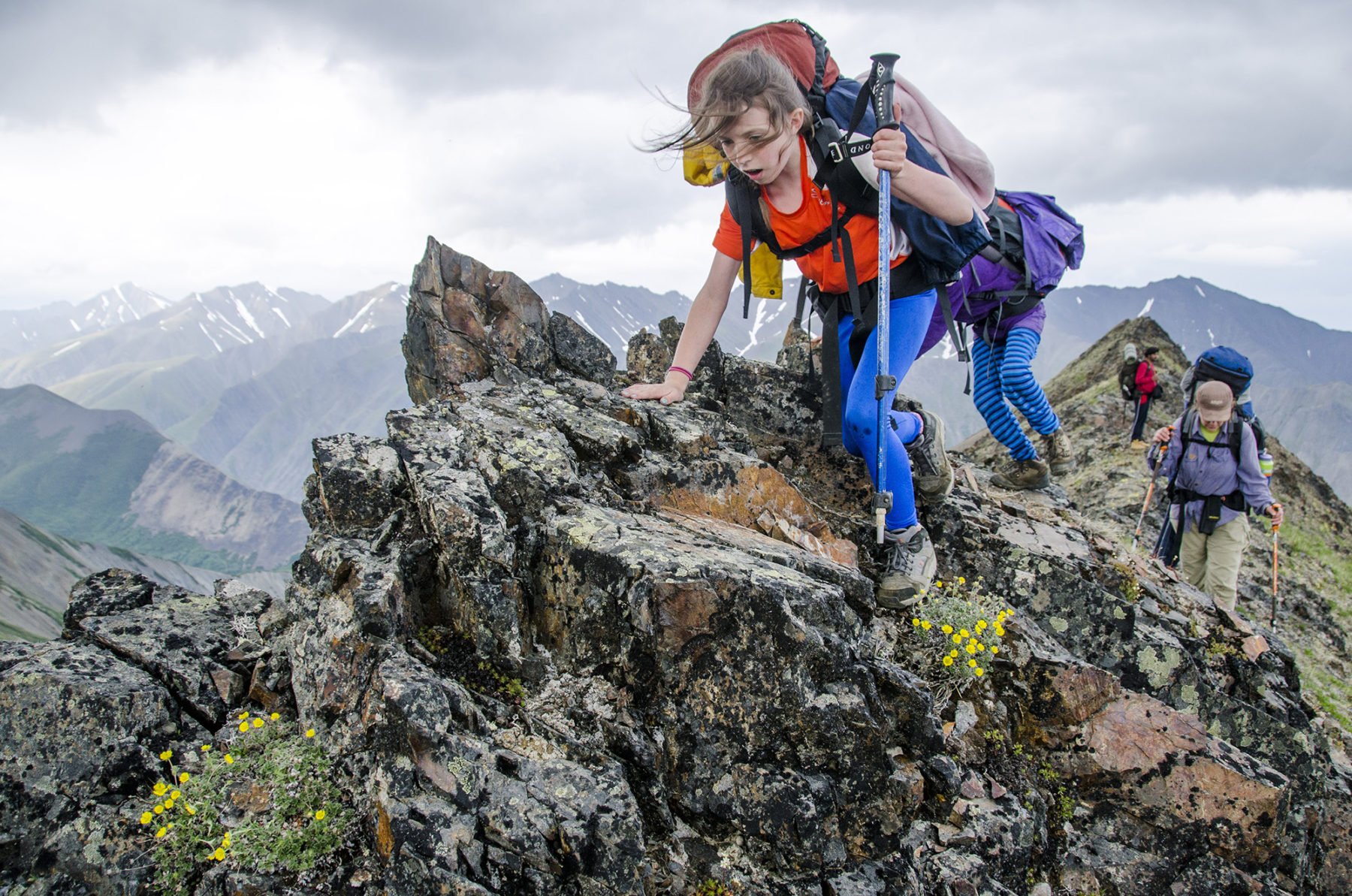
Hiking is Kluane’s most popular activity. Opportunities range from short strolls to multi-day route-finding adventures. Whether you get out for an hour, a day, or a week, there is much to explore in Kluane NP. Start at the Parks Canada Visitor Centre in Haines Junction to get your bearings and then explore the network of hiking and biking tails, keeping your eyes peeled for mountain goats and Dall sheep along the way.
Parks Canada maintains the park in a natural state, with very few man-made structures. Beginner to intermediate hikers will have easy access to a wide range of trails which are graded for length and difficulty. Experienced hikers can journey deep into remote areas where there are only routes rather than trails. These journeys involve no-trace camping and require map reading and navigation skills as well as being confident to cross creeks or rivers where there are no foot bridges. Depending on the route, hikers will experience views of hanging glaciers, cirques, and mountain vistas in every direction. It’s also possible to start hikes further into the park with a floatplane ride – one such route is the epic 96 km Donjek, which brings hikers to the toe of the massive Donjek Glacier.
The Auriol Trail in Kluane NP is a moderate loop that takes in pristine boreal forest, sub-alpine terrain and epic mountain slopes. The park is teeming with wildlife, including Dall sheep, caribou, moose, grizzlies and black bears, as well as smaller mammals and plenty of birdlife. Hike the loop in four hours or take your time and spend the day enjoying the vistas over Haines Junction and the distant Ruby Ranges. Serious hikers can use this route to access the more challenging Quill Peak and Mt. Martha Black.
As the name suggests, Sheep Creek Trail is ideal for viewing Dall sheep in the spring. The trail incorporates several beautiful viewpoints of the Slims River Valley, and even the famous Kaskawulsh Glacier. Feeling energetic? Continue along the Thechàl Dhâl Ridge route to the top of Thechàl Dhâl (Sheep Mountain). You’ll be rewarded with stunning views of Kluane Lake, Outpost Mountain, Red Castle Ridge, the Ruby Range and Sheep-Bullion Plateau.
The campground next to Kathleen Lake, just south of Haines Junction, is the perfect pitstop. The area features several hiking trails and a boat launch for anyone with a hankering for rainbow trout. Challenge yourself to make the ascent to the King’s Throne nestled in an amphitheatre of rocky ridges. Make it all the way to the summit an you’ll be rewarded with endless views of valleys, rivers, lakes, and mountains. – Pip Macken
Bike
Old Ghost Road, South Island, New Zealand
NZ’s South Island is jam-packed with awesome mountain biking with a plethora of trail choices for all rider skill levels. The 85km Old Ghost Road, in the South Island’s north-west corner, is a true bucket-list adventure for experienced mountain bikers. It is an old gold miners’ road that has been developed (by a primarily volunteer workforce that has done an exemplary job) into an awesome combined MTB/hiking route, linking the Mokihinui River in the north, with an old miner’s dray road in the Lyell region to the south, travelling via four old mining ghost towns along the way.
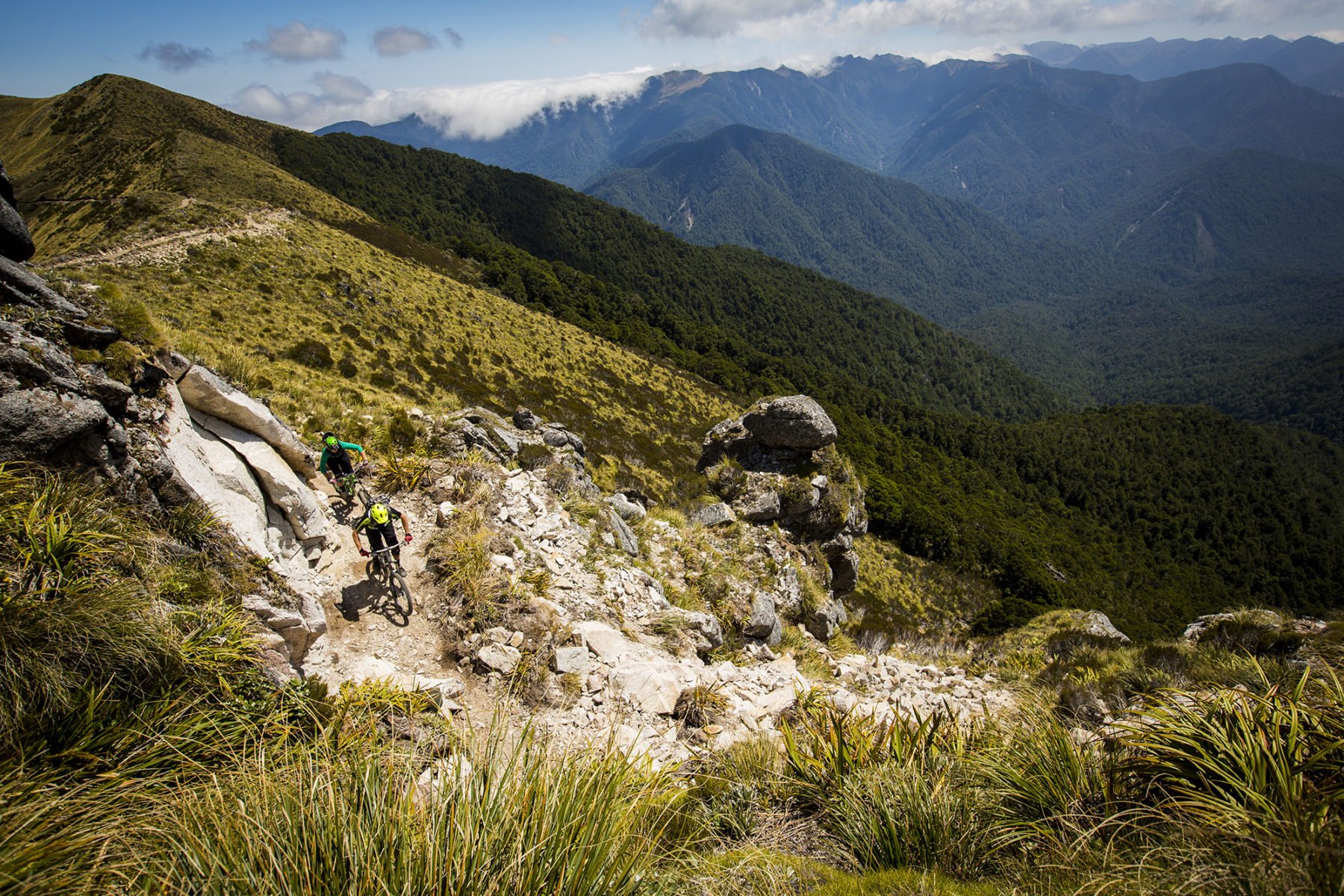
If you’re fit, the Old Ghost Road can be ridden over two to four days, with the preferred direction being south to north (from Lyell campground, and finishing at Seddonville). The first climb is a big one – 18km and ascending a total of 765m to Lyell Saddle Hut. You can either stay here or continue on another 12km to Ghost Lake Hut and enjoy its all-encompassing views. It’s a brilliant first night and leads into an epic second day of 13km of descending (around 800m) along technical trail, before negotiating the exposed Skyline Steps and then continuing on the bike, following a flowing trail to Stern Valley Hut. From here, you go through Earnest Valley and then climb a bit more, before descending again to Goat Creek Hut, 14km beyond Stern Valley Hut. After around six hours since Ghost Lake Hut, it’s a welcome overnight stop. From here you ride through podocarp forest to Mokihinui Forks (there is a NZ DOC hut here) and then further along (after a left turn) you’ll reach Specimen Point Hut at the head of Mokihinui River Gorge. From this hut, it’s all systems go to reach the ocean, jumping on and off the old miners’ road through the gorge before reaching Seddonville and trail’s end.
It’s a challenging few days on a mountain bike, but you will be so enraptured by the landscape you’re riding through – and the views – you’ll forget all the hard stuff and just enjoy the Old Ghost Road for what it is: an epic MTB adventure.
Sun Peaks Resort, British Columbia, Canada
British Columbia is considered a mecca of mountain biking, with Vancouver’s famous North Shore, the Sea to Sky Corridor and Whistler Bike Park all on most Aussie MTBers’ bucket lists. Now, they can add one more: Sun Peak Resort’s Bike Park. This MTB trail bonanza is located 45 minutes north-east of Kamloops, renowned as the birthplace of freeride MTB (and where original free-riders, Wade Simmons, Brett Tippie and Richie Schley grew up).

Sun Peaks Bike Park (part of the larger resort) has offered excellent mountain biking for years but has recently finished a trail expansion stage, timed to open for the northern hemisphere summer, thanks to a $1.5million investment (in the resort and the community). The $1.5 million includes a vital $200,000 through the Targeted Regional Tourism Development Initiative and $297,875 from the British Columbia’s Community Economic Recovery Infrastructure Program, along with a contribution of $150,000 from Tourism Sun Peaks. This includes summer chairlift access to high trailheads, and 31km of new trails. The big one is a second chairlift for access to the Bike Park on Sundance Mountain, which includes six new trails.
The 19km of trail-work here includes trails for everyone from beginner to expert. The park’s Sundance area will include two new black trails (with one advanced jump trail), two blue and two green (beginner) trails, and a green trail that takes riders from top to bottom.
The Bike Park riding experience will be further enhanced (in the future) with singletrack that captures the region’s distinctive raw-trail feel (think: rooty, challenging and fun) that has seen it become a must-visit for both local and international riders.
Sun Peaks’ expansion plans include cross-country and enduro pedal access trails, as well. An extra 12km of hand- and machine-built trails will open in stages this northern hemisphere summer on Mt Morrisey and include a 2km viewpoint trail (shared with hikers), a 6km climb trail (also shared) and a 4km downhill.
For Aussie riders looking to pack their bike and jump on a BC-bound plane for that once-in-a-lifetime dream trip to some of the world’s most iconic MTB destinations, these new developments at Sun Peaks Resort have given them another perfect reason to do so.
Paddle
The Upper Shoalhaven River Gorge, NSW, Australia
There’s a world-class paddling destination that is tucked away in a little pocket of Australia’s east coast, two hours south of Sydney and two hours northeast of Canberra. The village of Kangaroo Valley is a stunning destination in its own right, but it also serves as the gateway to arguably the most scenic flatwater paddling destination in NSW: The Upper Shoalhaven River Gorge.

The Shoalhaven River flows 327kms from the Great Dividing Range, east of Cooma, dropping 865m to the ocean at Shoalhaven Heads. Toward the end of the river’s journey, its waters are impounded by Tallowa Dam, below its confluence point with the Kangaroo River. The resulting backwater is called Lake Yarrunga, which provides over 50kms of flatwater paddling with loads of campsite options. The Upper Shoalhaven Gorge is in the western-most part of the lake.
Kangaroo Valley is home to Valley Outdoors; a multi-activity adventure company that offers guided multi-day canoeing experiences in this amazing wilderness. Using timber paddles from Canada, open traditional canoes from the USA, and paddling techniques honed throughout history, you’ll feel as close to the roots of canoeing tradition as possible; short of making the canoe yourself. You’ll be given waterproof barrels to pack your gear, a comfortable life jacket to wear, and a kneeling mat to use if you’re keen to paddle in a traditional kneeling position. Your qualified and experienced guide will orientate you to your surroundings and equip you with the knowledge and skill to pack your canoe and safely depart the shore. Once on the water, you’ll receive top-level paddling instruction in order to fully control your craft along the journey.
After putting in, it’s only a few hundred metres before the dam is no longer visible and the true beauty of the Shoalhaven Gorge lies before you. Multiple layers of towering sandstone cliffs sit atop impossibly-steep hillsides, the vegetation changes in each gully, revealing pockets of temperate rainforest species. After good rainfall, countless waterfalls stream from the hillsides. Wildlife abounds: water dragons, goannas and superb lyrebirds are commonly seen, while azure kingfishers regularly dart along the bank, and wedge-tailed eagles and white-bellied sea eagles are almost a guaranteed sight. More recently, dingoes have been spotted.
The team at Valley Outdoors believe a multi-day trip in the Upper Shoalhaven Gorge is the best way to experience the magic it has to offer. Its all-inclusive tours are also inclusive of all abilities; a multi-day canoe journey is well-suited to extended/intergenerational families. The guides take you to hidden waterfalls and swimming holes as well as tucked-away caves and the best campsites. A night or two on a canoeing trip in the Upper Shoalhaven Gorge will leave you awestruck, probably exhausted, but fully refreshed and re-centred. As the “Father of National Parks”, John Muir, said: “The rivers flow not past but through us.” –Travis Frenay
The Yukon Territory, Canada
If there’s an outdoor activity that could be classified as synonymous with the Yukon Territory, it would have to be paddling. The canoe is, of course, a Canadian icon – and the Yukon has myriad rivers and lakes suited to this craft – but there is also plenty of kayaking (both flat and white-water) and rafting available on several rivers, too. It really is a matter of “picking your poison” in terms of finding a waterway and it all starts with the territory’s namesake river…
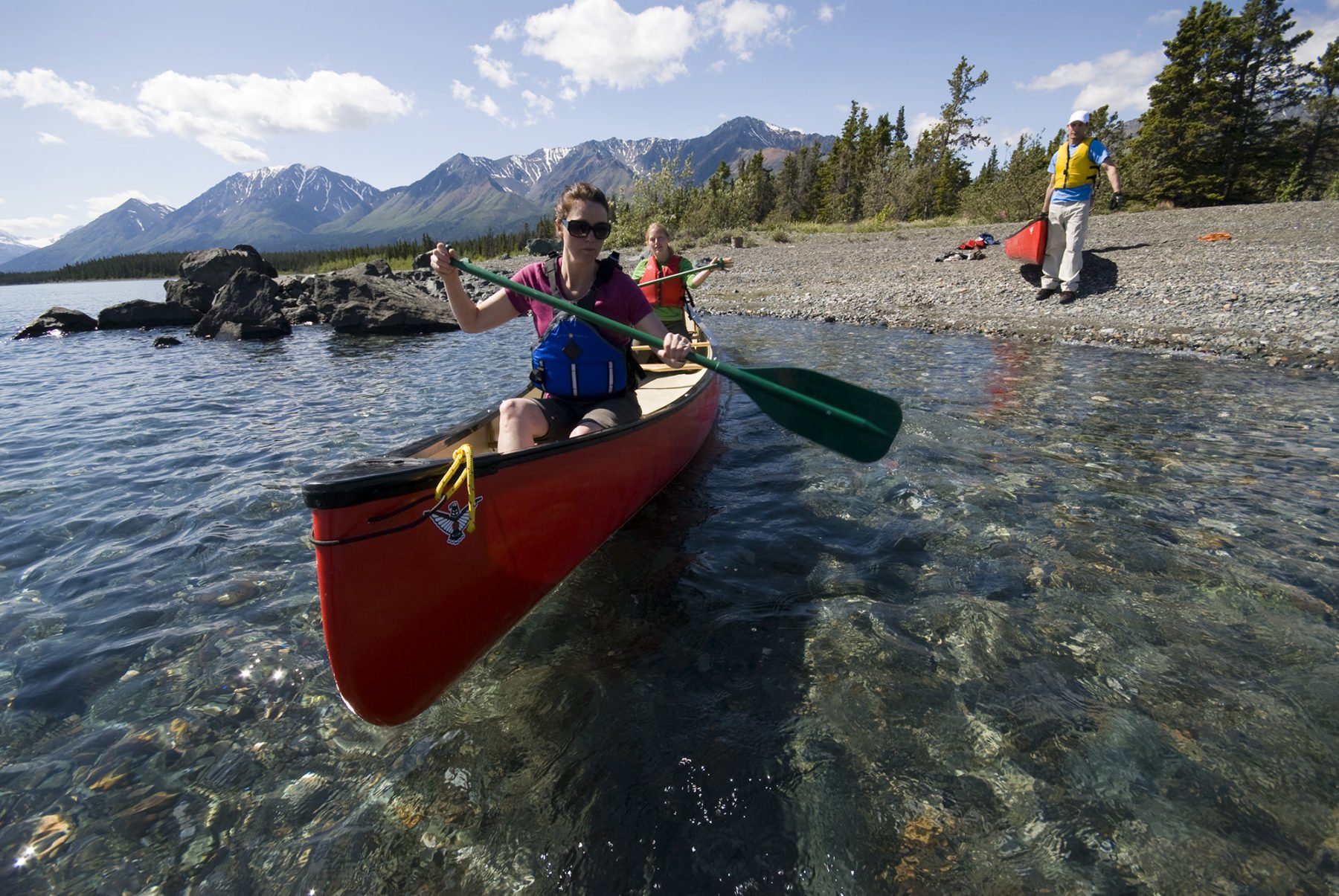
The Yukon River is one of the canoeing world’s most famous bucket-list journeys and, if you have the time, the journey from Whitehorse north to Dawson City, replicating the route taken by the ‘stampeders’ in the goldrush era as they rushed to the Klondike goldfields, is brilliant. The ‘Full Monty’ version of this journey takes between 14 and 20 days – and we’d highly recommend going with an experienced guiding company, simply to ensure all logistics are taken care of and you can just enjoy paddling. For those with less time, you can opt to paddle either the Whitehorse to Carcross leg, or the Carcross to Dawson City one. Of course, even a day paddling this famous river is great fun and there are plenty of operators who provide guided day paddles, or canoe hire for those wishing to tackle the big river independently (with a pick-up and return to Whitehorse at the end of the day). Other longer canoe adventures include the Snake, Wind, Big Salmon, Bonnet Plume and Nisutlin rivers.
In terms of day trips, along with the Yukon there are a number of other fantastic canoe rivers, such as the Takhini and the Wheaton – both close enough to Whitehorse to enable them being tackled as guided day paddles, or independent. Their relative proximity to Whitehorse means you can be back, regaling fellow travellers with your canoe adventure anecdotes that evening, while enjoying a local beer and excellent meal.
Whitewater rafting is also very popular in the Yukon, with the multi-day, guided white-water adventure on the Tatshenshini River is probably the territory’s most famous. The Tatshenshini is a Canadian Heritage River (due to its recreational and cultural significance) that flows through the world’s largest bio-reserve as it travels from the Yukon to British Columbia, before finishing at Alaska and the Pacific Ocean. Yes, it is massive, both in size, the gobsmacking land you float past (think: glaciers, icebergs, and wild forest), and the experience itself, with wildlife in abundance and pristine river-side campsites each night.
You don’t have to spend multiple days on the water to enjoy the iconic Yukon rafting experience, however. A number of guiding outfits offer day trips along parts of the Tatshenshini, as well as the Liard and, close to Whitehorse (on Skagway Road), the thrill-packed Tutshi, with its journey from tranquil lakes to faster water and then adrenalin-filled runs through rapids inside a river canyon.
Dream Adventure
Hurtigruten Norwegian Coastal Express
Now this would have to qualify as close to the ultimate bucket-list adventure: iconic adventure travel company, Hurtigruten, offers a small group adventure (24 maximum) to explore Norway and view the spectacular Northern Lights (Aurora Borealis).
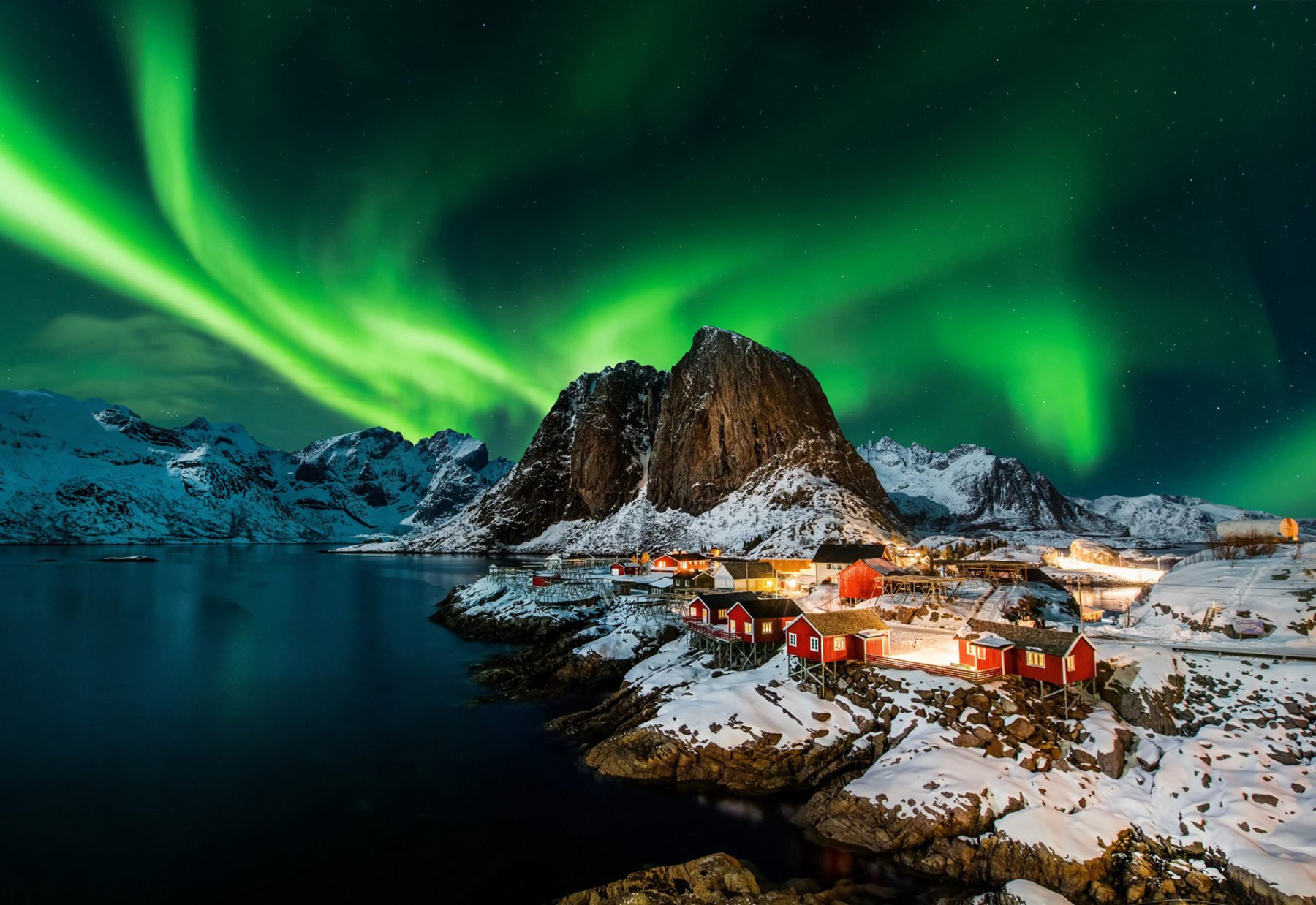
You’ll be escorted on your search for the Northern Lights by local expert guides who were born and raised on the very coast that you’ll discover. Available as north or southbound itineraries, the former will have you departing from Norway’s capital Oslo where a grand city tour awaits. Your sea/land voyage incorporates a ride on the Flam Railway – one of the world’s most famous train journeys – a ferry through magnificent fjords, and the iconic Hurtigruten coastal voyage – loved for almost 130 years by Norwegians and tourists alike.
Exploring the region like a local, you’ll visit charming hamlets, picturesque fjords, cross the Arctic Circle and witness the magnificent Northern Lights. Along the way you’ll ride husky sleighs, spend the night in a glass igloo and explore the Medieval town of Tallin in Estonia before wrapping up the tour in Helsinki. If by chance the lights do not appear on your trip, you’ll receive a six- or seven-day classic cruise for free thanks to Hurtigruten’s unique Northern Lights Promise.
Hurtigruten has cultivated strong partnerships with local producers and suppliers along the coast. This means that your on-board cuisine will be created from the freshest local ingredients, straight from the source. From fresh Arctic char, king crab, smoked sausages, award-winning cheese, local brews and spirits, you are fortunate enough to enjoy beautiful local foodstuffs with the amazing views.
Our world is as fragile as it is beautiful, and Hurtigruten is a steward when it comes to ensuring it will stay this way for future generations. The company has the strictest eco-credentials at sea, from its ground-breaking ships to its passion for inspiring guests such as yourself to become environmental ambassadors.
Hurtigruten was one of the first major companies to ban single-use plastic throughout its fleet, in 2018. More recently, Hurtigruten initiated one of Europe’s largest environmental ship upgrades. With three of its seven coastal ships being converted to hybrid power (following suit of its sister brand Hurtigruten Expeditions introducing the world’s first hybrid in 2019), you can look forward to greener sailings and an environmentally conscious cruise choice, while experiencing one of the world’s most incredible destinations.



